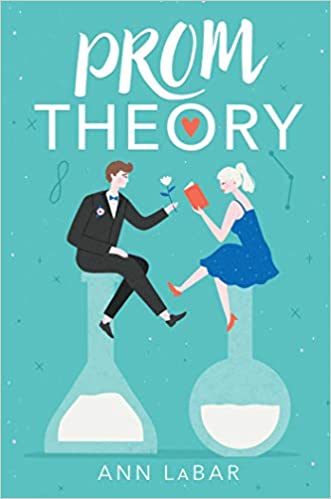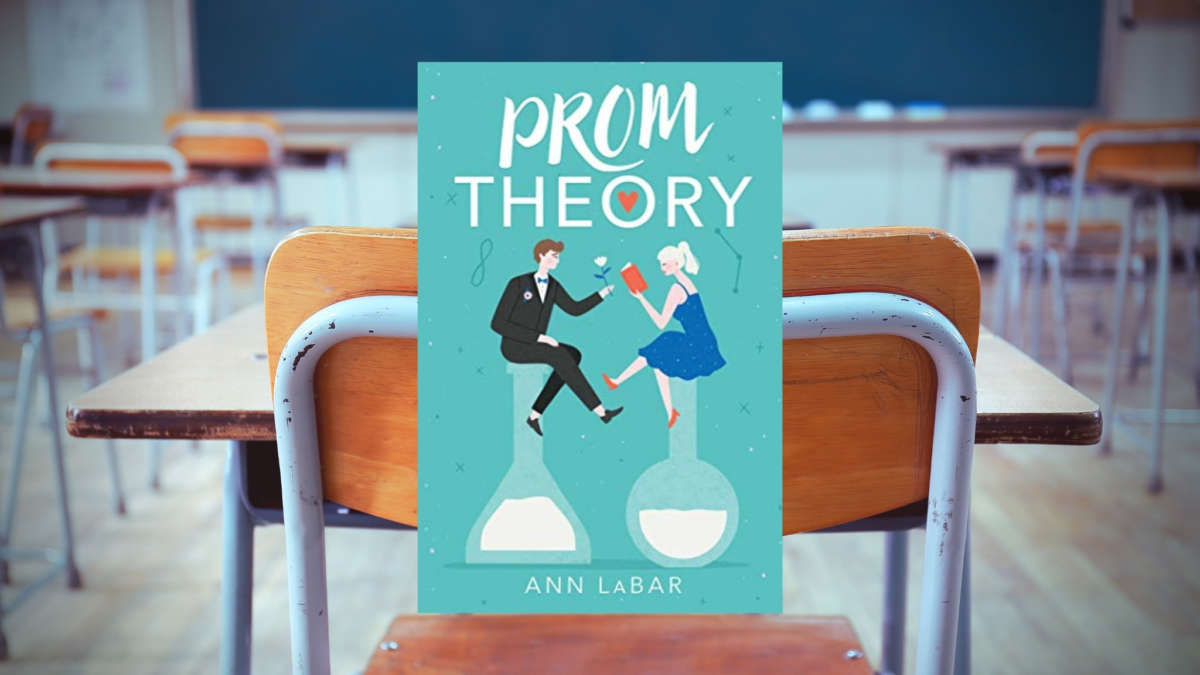Prom Theory by Ann LaBar
As she heads to her locker at the beginning of another day at school, Iris notices they’re everywhere — pink posters announcing “Only 19 days until Junior/Senior Prom,” et cetera. As usual, Iris has a more pragmatic view of reality. She views the posters as “a propaganda campaign geared to force the student body into participating in clichéd adolescent activities.”
Prom Theory by Ann LaBar (Simon & Schuster) is a well-written young adult book with smart humor and dialogue. It’s high school intrigue up close with a romantic twist. LaBar also does a great job portraying Iris’ thoughts and what it’s like to be extremely bright and … different.
Iris has been diagnosed with nonverbal learning disability, a much under-recognized disorder marked by struggles with organization, attention, executive functioning, multitasking, nonverbal communication, spatial awareness and motor skills, according to the NVLD Project.
Noisy and confusing situations stress Iris. “Ever since I could remember, not understanding what people were thinking or feeling had made me anxious,” opines our protagonist, but she’s developed socially acceptable ways to help her through them. She takes refuge in science and logic.
All this obsession with finding a date for the prom, she tells her friends, is, like sexual attraction, simply a matter of biology. Emotions have nothing to do with it, and she will prove it by getting a date with the seriously hot track star who has yet to recognize her existence. “Attraction is chemical and easy to trigger in someone if you know what you’re doing,” says Iris.
“It’s not chem lab. Man, you really know how to take the mystery out of everything,” says Squeak. He’s one of Iris’s best two friends, who, along with Esther, understand her bluntness and social awkwardness.
AN EXPERIMENT WITH AN EDGE
As Iris begins her experiment in earnest, she enlists her BFFs. “I’ve prepared a handout,” she tells them, “On the front is a list of the experimental categories and general procedures.” Esther begins to take an interest when she realizes Iris’ science may give her an edge when attempting to land a date to the prom with football star Darren.
Squeak has other things on his mind. He’s a senior trying to decide where he’ll go to college next year. If he’s not around, who will help Iris negotiate her days? She has a tendency to become distracted, overwhelmed or lost.
Iris is worried about life without Squeak, too. He’s literally the boy next door. They’ve been close since preschool, with near-daily contact for 14 years. “He was one of the few who could touch me without triggering all my sensory alarms,” she opines.
When Iris learns Squeak is tutoring the captain of the cheerleading squad in physics, she rationalizes: “I had no reason to care about the cheerleading squad or if Squeak was spending the time he normally spent with me with some athletic, and attractive, socially significant female. Why would I?” But what if Princess Pom-Pom’s ulterior motive is getting a date to the prom — with Squeak? Unsettled by her confusion, Iris concentrates on her experiment and sees some surprising results.
WRITE WHAT YOU KNOW
LaBar writes from experience — one of her children has the same learning disability. “From day one, there was something off,” she says. Her child couldn’t read until third grade, but quickly advanced from picture books to My Friend Flicka. There also was a heightened interest in special topics, including birds and animals. There was a processing disorder, poor hand-to-eye coordination and no visual mapping. “My kid wouldn’t be able to drive without an iPhone,” says LaBar.
After years of testing, it was a relief for LaBar to learn that her “quirky” child had a diagnosis. “Nonverbal learning disability is suddenly starting to get some attention. In the past 10 years they’ve discovered more about it and have been working with it in schools,” she says. Adding to its recognition, actor Chris Rock last year revealed he’d recently been diagnosed with the condition.
“I’ve had interesting tweets from readers,” says LaBar. “One girl was so excited; she said that when she read the book she almost cried because she felt it was about her. A lot of parents told me it meant a lot to read about a child like theirs. There’s educational value here.” The Children’s Book Council lists Prom Theory in its showcase of disability awareness groups.
LaBar says her book is a good way for young people to “get into the head of someone who’s very different. It also shows what a good support system can do.”
RELATED POSTS
“My Name Is Layla” by Reyna Marder Gentin Honors Teen Hopes and Hardships
John Green’s ‘Turtles All the Way Down’ is Finally Here!





